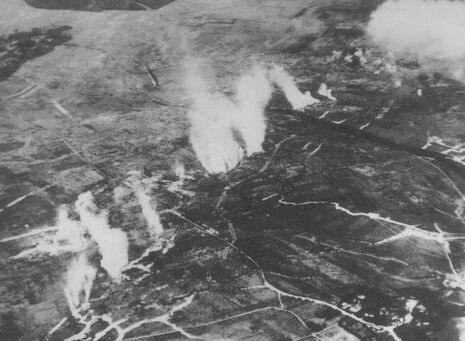Bacteria Bouquet II: Solving the problems of war and peace
Columnist Zi Ran Shen returns to look at how bacteria have been used to improve crop yields as well as create chemical weapons

On 2nd May 1915, Clara Immerwahr drew her last breath in her son’s arms. Not long before, she had been reunited with her husband, who had returned from Belgium on business. As the news of his imminent arrival reached her ears, she prepared to meet him in their back garden.
There was still a hint of winter chill in the air, but that could not compare to the cold in her heart and the cool steel of the pistol she firmly held. Their marriage had been on rocky ground recently – she was a staunch pacifist and he was adamant in aiding Germany in the war effort. “During peace time a scientist belongs to the World, but during war time he belongs to his country,” he would later say to those who questioned him.
He was a man of his word, and had just come home from the first successful chlorine gas attack in Flanders. When the gas touched water, it turned into burning acid in its victim’s lungs, eyes, and mouths. It was the first time that humanity had seen potent chemical weapons. Clara stood strong, and confronted her husband about the death and suffering that he and his inventions had caused.
She questioned him, pointing her gun at her own heart. How could he? Where was his humanity or his integrity as a fellow scientist? The answer he gave sent a chill down her spine. She pulled the trigger. On 3rd May 1915, Fritz Haber returned to the front lines.
In this week’s Bacteria Bouquet, I explore the story of food and war though the diazotrophs – the bacteria which create ammonia. Diazotrophs were discovered in the nodules of legume rootsin by a Dutch scientist the late 19th century.
For many millennia, legumes had been known to have soil-enriching properties which became the basis for crop rotation – the practice of planting different crops each year to maintain soil fertility and increase crop yield. This fed the entire world up until the 19th century, when the population was growing too fast for the crops to catch up. The legumes’ physiology was extensively studied to elucidate how they were able to enrich the soil, but the only notable feature was these nodules on their roots.
The nodules, as it turns out, are ‘houses’ for diazotrophs, providing a source of nitrogen in exchange for sugar, proteins, and other nutrients from the plant. In this way, the diazotrophs deposit their biologically consumable nitrogen into the ground around them and thus enrich the soil.
Although Earth is nitrogen-rich, most of this exists in unusable forms. Atmospheric nitrogen (N2) is very stable chemically and cannot be directly incorporated into biological systems. However, nitrogen is an essential element in biomolecules such as DNA, RNA, and amino acids – without which we would have no genetic information or protein mass.
Before the early 20th century, the only source of biologically usable nitrogen available was from the diazotrophs. Almost every molecule of nitrogen in a living creature has been processed by diazotrophs at one time or another. They use metal ions such as iron or molybdenum to add electrons onto nitrogen gas, thereby turning it into ammonia – a process so extremely energy-consuming and chemically complex that it took scientists from all over the world around 100 years to perfect and perform on an industrial scale. The scientist who achieved this feat happened to be Fritz Haber.
Through the Haber-Bosch nitrogen-fixing process, ammonia could finally be produced on an industrial scale. Inspired by the natural nitrogen fixation process used in the diazotrophs, Haber used an iron-oxygen catalyst, and energy in the form of heat and pressure. Through the mimicry of nature both catastrophe and salvation were born.
True to his word, at peacetime Haber was a scientist for the world – ammonia made from his invention was used for fertilisers which solved the crop yield problem that had plagued the agricultural world for most of the 19th century.
During wartime, he turned against the rest of the world for Germany. Not only did he supply copious amounts of nitrates to the German war effort, he also turned the ammonia reactor into a deadly weapon. Instead of pumping out crop-fertilising ammonia, the reactor was tuned to pump out scalding chlorine gas.
With that, the face of chemical warfare was completely changed. Diazotrophs have simultaneously become the inspiration for a tool of life which feeds us and a tool of death which takes us away
 News / SU reluctantly registers controversial women’s soc18 December 2025
News / SU reluctantly registers controversial women’s soc18 December 2025 News / CUP announces funding scheme for under-represented academics19 December 2025
News / CUP announces funding scheme for under-represented academics19 December 2025 Features / Should I stay or should I go? Cambridge students and alumni reflect on how their memories stay with them15 December 2025
Features / Should I stay or should I go? Cambridge students and alumni reflect on how their memories stay with them15 December 2025 Fashion / The art of the formal outfit 18 December 2025
Fashion / The art of the formal outfit 18 December 2025 News / Dons warn PM about Vet School closure16 December 2025
News / Dons warn PM about Vet School closure16 December 2025









